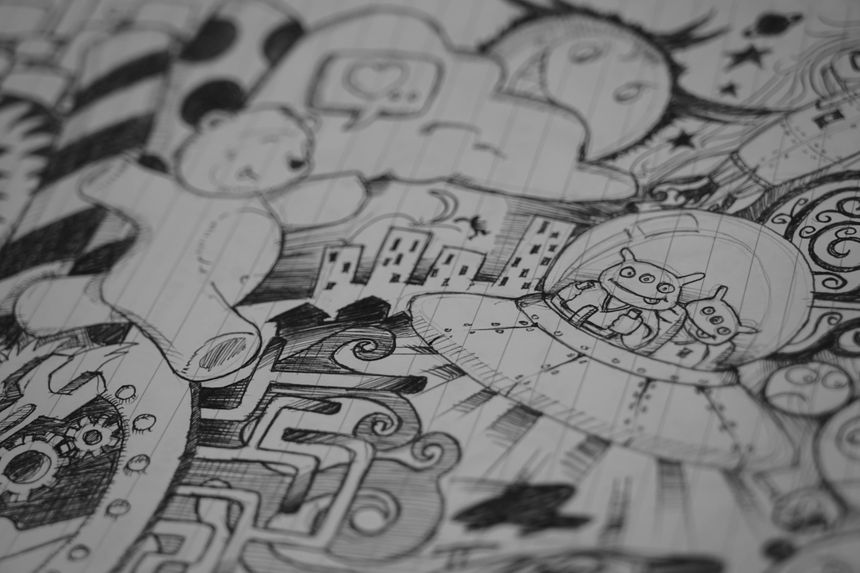If your comic book features aliens, robots or dream-like journeys, don’t worry - you’re not automatically infringing someone else’s copyright.
With order no. 21851 of July 29th 2025, the Italian Supreme Court rejected the appeal lodged by a comic book author who alleged that his unpublished scripts had been disclosed without his consent and subsequently plagiarised in well-known science-fiction series published by major Italian publishers.
The Supreme Court confirmed the rulings of both the Court of Milan and the Court of Appeal, reiterating a fundamental principle of copyright law: copyright protects the original expression of an idea, not the idea itself.
The background: a dispute over a sci-fi saga
The dispute originated with Kepher, a sci-fi comic conceived by illustrator and scriptwriter Roberto Cardinale. After submitting scripts to an editor and a collaborator for potential publication, Cardinale discovered similarities between his work and other comics such as Dylan Dog, Orfani and Agenzia Alpha 36 - il signore del Cosmo, published by Sergio Bonelli Editore, as well as Phlox, published by Shockdom.
Cardinale claimed that his unpublished material had been improperly disclosed and that various narrative and graphic elements had been unlawfully reproduced. He sought an injunction and damages for copyright infringement. Both the Court of Milan and the Court of Appeal rejected his claims, concluding that the contested fragments lacked originality and, in any case, were insufficiently expressive to merit protection.
The Supreme Court’s ruling: ideas vs expression
The Court dismissed the appeal and doubled down on a key principle: copyright doesn’t protect ideas, it protects the way those ideas are expressed.
In doing so, the Court drew on earlier case law, confirming that:
copyright protection does not extend to abstract ideas or narrative motifs commonly used in science fiction (e.g. aliens, technological devices, dream-like journeys, robots as sidekicks). In other words, the same idea can inspire many different works, but what matters is the author’s subjective creativity in expressing it (see also Italian Supreme Court 12 March 2004, no. 5089; Italian Supreme Court 29 May 2020, no. 10300).
infringement occurs not only when an entire work is reproduced, but also when the essential traits of an earlier work are replicated in another. However, reproducing individual motifs does not amount to plagiarism or counterfeiting if they are common ones in science-fiction literature and comics.
collective works remain protected: the Supreme Court rejected the argument that identifying a comic as a “collective work” limits its protection. Rather, the key issue is whether the allegedly copied elements are original and expressive enough to merit protection.
Comment
Italian law adopts a broad notion of creativity: a work can be protected even if it represents simple or common ideas, or material already in the public domain (see for instance Court of Rome, 12 January 2019). What matters is that the idea is given its own expressive and autonomous form.
This approach has led courts to recognize copyright in contexts that may appear, at first glance, outside the traditional scope of protection.
For instance, Italian case law has recognized copyright protection in the filming of football matches, where the choice of camera angles, the decision to highlight specific moments of the event (not limited to the actual play), and the use of graphics and information combine to create a distinctive sequence of images and sounds reflecting original creative choices (Court of Milan, 20 March 2010, in Dir. inf., 2010, 6, 908).
Similarly, protection was granted to an art history course, which combined classroom lessons and guided tours - an otherwise common format - because the course presented an original expressive form (Court of Appeal of Rome, 8 July 2013, no. 3915, in Foro it., 2013, 12, I, 3587).
Seen in this light, the Kepher decision sits firmly within this established framework. In the field of comics, where recurring tropes are inevitable, this distinction is particularly significant: borrowing inspiration is legitimate, but reproducing another author’s original expression is not.

/Passle/65c4b3ec7a33ecde2328516b/MediaLibrary/Images/2024-07-22-15-39-55-244-669e7d4b0e665f7cf84e438b.jpeg)
/Passle/65c4b3ec7a33ecde2328516b/MediaLibrary/Images/63d13afbf636e918380ad1f9/2024-03-24-19-45-17-928-660082cdf2101756707c7e6a.jpg)
/Passle/65c4b3ec7a33ecde2328516b/MediaLibrary/Images/2025-03-27-09-47-16-529-67e51ea41100ec667386b13d.jpg)
/Passle/65c4b3ec7a33ecde2328516b/MediaLibrary/Images/63d13afbf636e918380ad1f9/2024-03-24-20-22-39-915-66008b8ff2101756707c8655.jpeg)